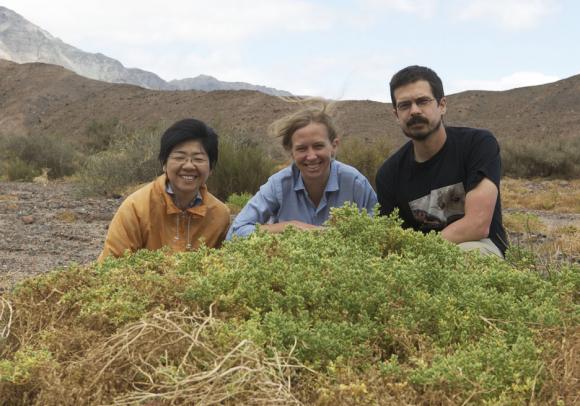PROVIDENCE, R.I. [Brown University] — The cactus, stalwart of the desert, has quite a story to tell about the evolution of plant communities found the world over.
In a paper published in the online edition of the Proceedings of the National Academy of Sciences, Brown University biologists and colleagues have discovered that the rapid speciation of cacti occurred between 5 and 10 million years ago and coincided with species explosions by other succulent plant groups around the world. The researchers propose that a prolonged dry spell and possibly lower levels of atmospheric carbon dioxide during that time, known as the late Miocene, opened habitat that contributed to the rise of these plants and a broad vegetative makeover on Earth.
“The cacti, as a group, have been around for a while, but most of the species diversity that we see today was generated really recently,” said Monica Arakaki, a postdoctoral researcher at Brown and the paper’s lead author.
The Brown team and colleagues from Oberlin College and the University of Zurich, Switzerland, were interested primarily in dating the origins of the cacti (scientific name Cactaceae). The team sequenced the chloroplast genomes (the organelles inside plant leaves that engineer photosynthesis) for a dozen cacti and their relatives and combined their new genomic data with existing genomes to build a phylogeny, or evolutionary tree, for angiosperms, the genealogical line of flowering plants that represents roughly 90 percent of all plants worldwide. From there, the scientists deduced that Cactaceae first diverged from its angiosperm relatives roughly 35 million years ago but didn’t engage in rapid speciation for at least another 25 million years.
“Cacti were actually present on the landscape for millions of years — looking like cacti and acting like cacti — before they began their major diversification,” said Erika Edwards, assistant professor of biology in the Department of Ecology and Evolutionary Biology at Brown and corresponding author on the paper.
The team then sifted through the literature on the timing of diversification in other succulents from regions around the globe. Succulents include aloes, the agaves of North America, the ice plants of South Africa and other lineages. Their comfort zone is in water-limited climates, and they have adapted physical characteristics to cope in those locales, such as shallow root systems, specialized water-storing tissue and exchanging gas at night, when it is cooler and less humid and so less water is lost. What struck the researchers was that all the succulent lineages, across habitats and continents, underwent major speciation between 5 and 10 million years ago, during roughly the same time period as the cacti.
C4 grasses, the tropical grasses that are now up to 20 percent of our planet’s vegetative covering, burst onto the scene as well during this same window of time.
This must be more than a coincidence, the researchers thought. “It isn’t overly surprising that most of the standing cactus diversity is relatively young. But when you put these species radiations in the context of all the other changes in plant communities that were happening at that very moment, all over the world, it begs some sort of global environmental driver,” Edwards said.
The most plausible causes, the scientists thought, were a drying out of the planet and lowering of atmospheric carbon-dioxide levels. A wealth of research involving oxygen isotopes from a deep-sea organism showed the Earth underwent a drop in temperature, which the researchers believe led to reduced rainfall and increased aridity worldwide.
The carbon-dioxide link is more nuanced and controversial. The authors highlight one study that inferred atmospheric CO2 levels spiraled downward beginning roughly 15 million years ago. Combined with global cooling, “a drop in CO2 concentration would therefore immediately expand the ecological space in which drought-adapted succulent plants, with their high photosynthetic water use efficiency, would be competitive,” the authors write.
“We suggest that a rapid expansion of available habitat (rather than any particular new ‘key’ innovation) during the late Miocene was a primary driver of the global diversification of plant lineages already possessing a preadapted succulent syndrome,” the researchers write. “Against a backdrop of increasing global aridity, a sharp CO2 decline is a plausible driver of the simultaneous expansion of C4 grasslands, the clustering of new C4 origins, and the diversification of succulent lineages.”
Contributing authors include postdoctoral research associate Pascal-Antoine Christin, graduate student R. Matthew Ogburn, and undergraduate student Elizabeth Spriggs, all of Brown; Reto Nyffeler and Anita Lendel from the University of Zurich; Urs Eggli from the Succulent Plant Collection in Zurich; and Michael Moore from Oberlin.
The U.S. National Science Foundation funded the research.

